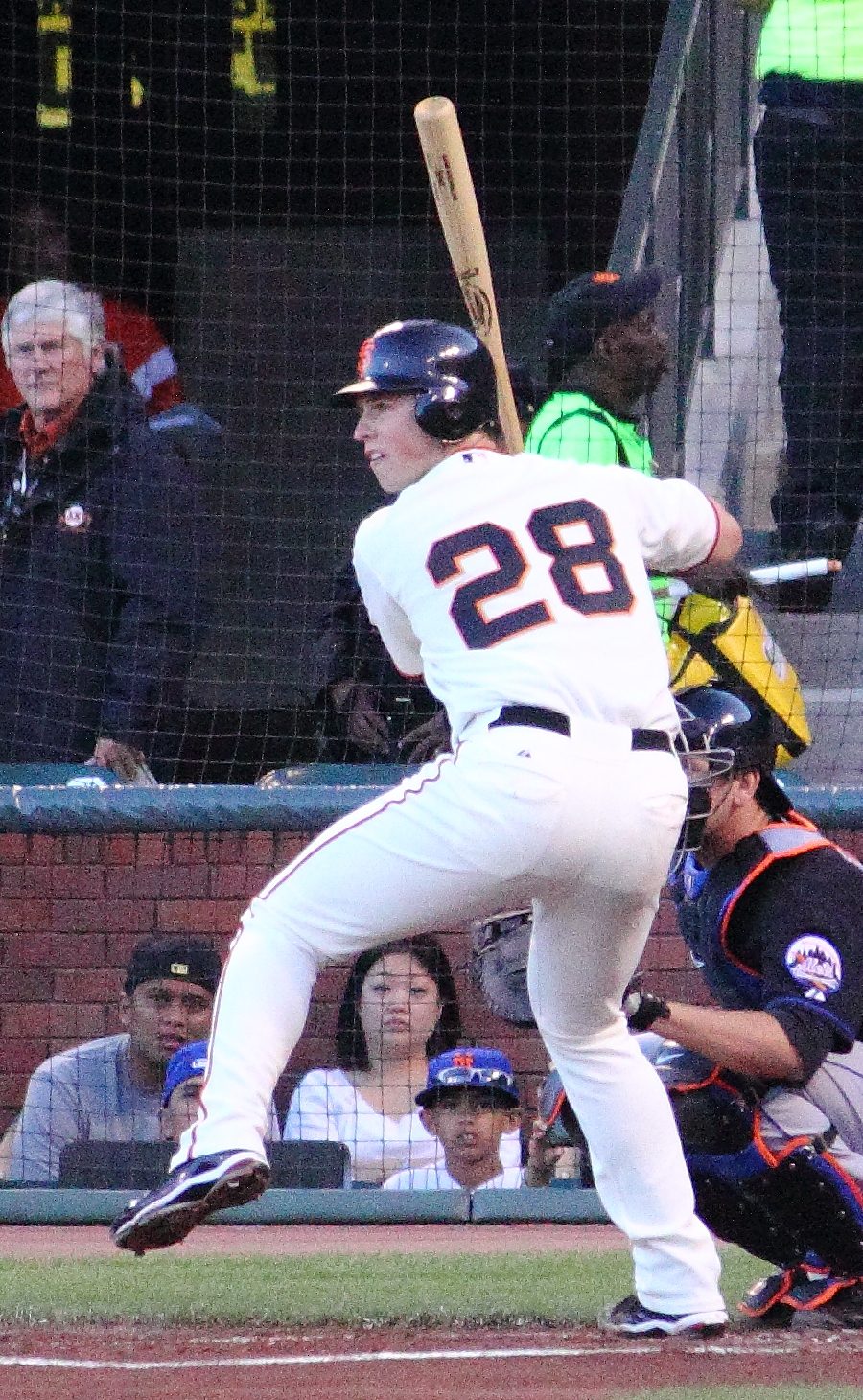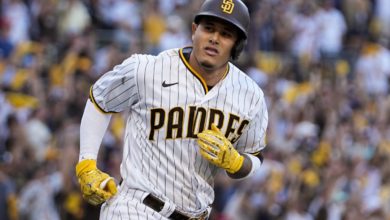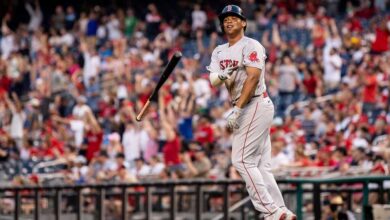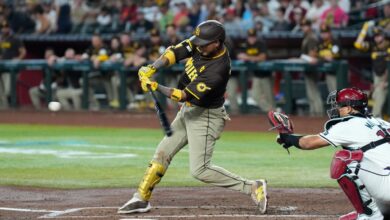
Babe Ruth seemed to be born to play baseball. Most know that before becoming the power hitter he will always be remembered for, he also starred as a pitcher for the Boston Red Sox, leading the league with a 1.75 ERA in 1916. Yet for all his home runs, Ruth could never claim to be something many young baseball players dream of blossoming into: a five-tool player.
Ty Cobb lacked the power and Lou Gehrig, Ruth, Jimmy Foxx and Ted Williams weren’t known for their arms, speed or defense. It really wasn’t until one city was blessed with 3 players at one position in the 1950’s that the world truly got a glimpse at five-tool baseball talent. Duke Snider, Mickey Mantle and Willie Mays all became stars with the Brooklyn Dodgers, New York Yankees and New York Giants in the 1950’s. All three had no glaring weaknesses and – from a positional player stand point – could do everything well.
In baseball the word tool began as a scouting term, used to grade potential major leaguers in five key areas for success in the game. A five tool player will hit for average, hit for power, possess good speed, a strong throwing arm and play quality defense. One can lose a tool or gain one throughout their career, but the more tools one harnesses the more complete a position player they will become. With that in mind, I humbly submit my nominations for the current all five-tool team:
C: Buster Posey: Generally, the term five-tool catcher is an oxymoron. Catchers are generally asked to provide quality defense, and any offensive contributions are considered a bonus. On top of that, they tend to veer closer to the tortoise than the hare on the speed scale. A few years ago Russell Martin could have staked a claim to be a rare legitimate five-tool catcher, but now we’re left to delve through the best of the four tool ones. A converted college shortstop, Posey has turned into an excellent receiver with a cannon for an arm. The reigning NL Rookie of the Year also boasts impressive hitting and power tools for the position. However, his lack of speed prevents him from becoming truly complete.
Runner up (s): Carlos Santana and Brian McCann both offer prodigious power and slightly below average speed (which is well-above average for the position), but lack defensive prowess. Yadier Molina is a tremendous defensive catcher with an unparalleled arm behind the dish, but grades only average in other tools.
1B: Albert Pujols – In perhaps the easiest call, the game’s best player, is also it’s most complete first sacker. Sir Albert’s power and hitting ability is well documented, but he also boasts rare speed for the position and a tremendous glove. His arm is easily his weakest tool, especially after slightly tearing a tendon in his throwing shoulder.
Runner up: Joey Votto bested Pujols for MVP in 2010, but trails Albert in defensive value, along with a much shorter track record in the other tool departments.
2B: Dustin Pedroia – If potential were all that mattered, Ian Kinsler and Ricky Weeks would be vying for this title. However, Pedroia has conistently been above average in all five tools throughout his career. He’s never had a power/speed combo season like Kinsler’s 30-30 2009, but he’s also never come close to plummeting to Kinsler’s .253 average that year.
Runner up: Like Pedroia, Brandon Phillips has shown consistent above average tools despite being labeled with the dreaded bust label after initially struggling with the Cleveland Indians. He enjoyed 3 straight 20-20 seasons from 2007-2009, but his defense and average – though solid – fall short of Pedroia’s level.
SS: Troy Tulowitzki – The days where you could go into your fantasy draft counting on an array of options at SS may be gone, but Tulowitzki is proving that there still remains at least one complete option, albeit an injury prone one. In a healthy year, one can usually count on around 30 HR’s and 15 SB’s with a .300 average to go with a strong arm and quality defense.
Runner Up: If defense weren’t a tool Hanley Ramirez would be the choice for SS. However, other than Tulowitzki, it’s difficult to find a truly versatile option to best Hanley’s impressive speed/power combo.
3B: David Wright – Other than his forgettable 2009 season, Wright has been able to produce above average tools across the board, topping 25 HR’s and a .300 average in 5 of his 6 full seasons and 15 steals in all 6. His defense and arm, while above average, lag behind the other 3 tools.
Runner UP: Evan Longoria bursted on the scene in 2008, helping lead the Rays to the World Series in his rookie year. Despite swiping 15 bags in 2010, he isn’t considered quite the speedster Wright is and has yet to to post a .300 average in his fledgeling career. However, he is a star defensively at the hot corner and boasts 30+ HR power.
LF: Carlos Gonzalez – The ex Diamondback and Athletic prospect has finally reached his ceiling as a five-tool stud. Although the sample size is small, Gonzalez’ 2010 season (34 HR, 26 SB, .336 Ba) was so impressive that I feel he has vaulted difficult competition to the apex of the position. His defense was above average in both center and left, and should play very well full-time in left in 2011.
Runner up (s): Carl Crawford exhibits 4 above average tools, with only his average power holding him back, while Ryan Braun and Matt Holiday have the offensive part of the equation down pat, but lack the ability of Gonzalez and Crawford in the field.
CF: Matt Kemp – Current CF’s certainly can’t live up to the glory days of the aforementioned NY trio in the 1950’s, but there are a few versatile players of note. While Grady Sizemore, Carlos Beltran and Curtis Granderson have lost their claims, young stars such as Matt Kemp, Colby Rasmus and Andrew McCutchen have picked up the slack. Taking Kemp over the other two is a bit of a gamble, given his lackluster 2010, but I think he recaptures the form he showed in 2009 (26 HR’s, 34 SB’s and a .297 average). Defensively all three grade out similarly above average.
Runner up (s): Really this position was a toss up for me. Anyone arguing that McCutchen or Rasmus deserves to be top dog here will get no argument from me. Both figure to belt 20-25 HR’s, swipe 20-30 bags and hit a shade under .300 in 2011. I went with Kemp because I view him as having the highest potential.
RF: Justin Upton – Few prospects have made scouts salivate more than Justin Upton who posted an .898 OPS (26 HR, 20 SB, .300 BA) in his year 21 season in 2009. Though he regressed slightly offensively he has almost limitless potential and is a dynamic defender in right.
Runner up (s): Jayson Werth, Hunter Pence and Shin-Soo Choo are all part of the discussion, but I’ll go with Nelson Cruz. His defense and arm in right set him apart from this group of similarly talented offensive profiles. All of these guys can usually be counted on for 20-20 years.
UT/DH: Michael Young – Though his speed and defense have declined to average (depending upon the position anyway) you’d figure a player as talented as Young would be able to find a spot on the field for a contender somewhere.
While we may never see a player reach the ridiculous level of my favorite five-tool player, Willie Mays, one of my favorite things as a basebal.
Feel free to share your suggestions if I missed some of your favorite versatile stars.





